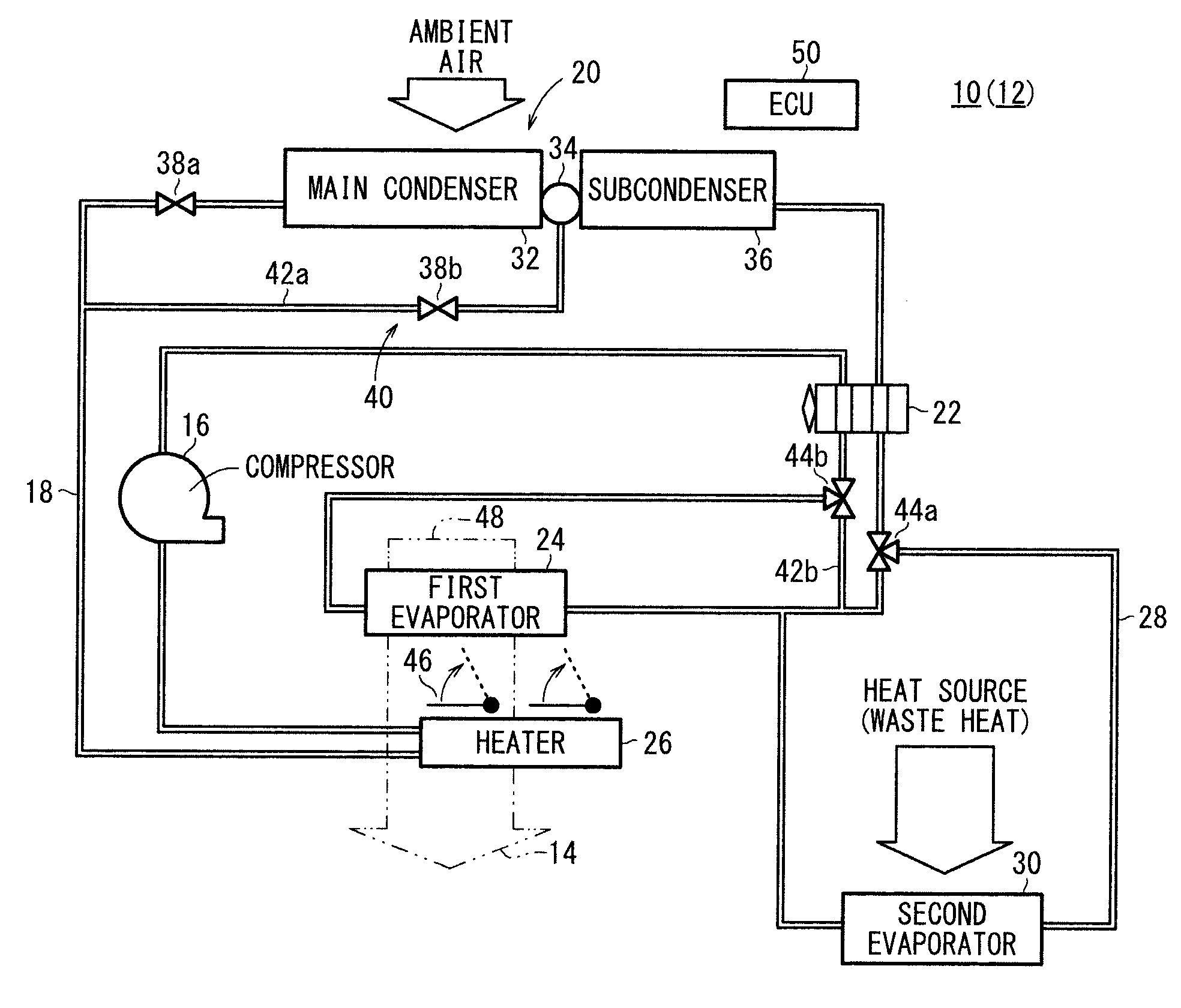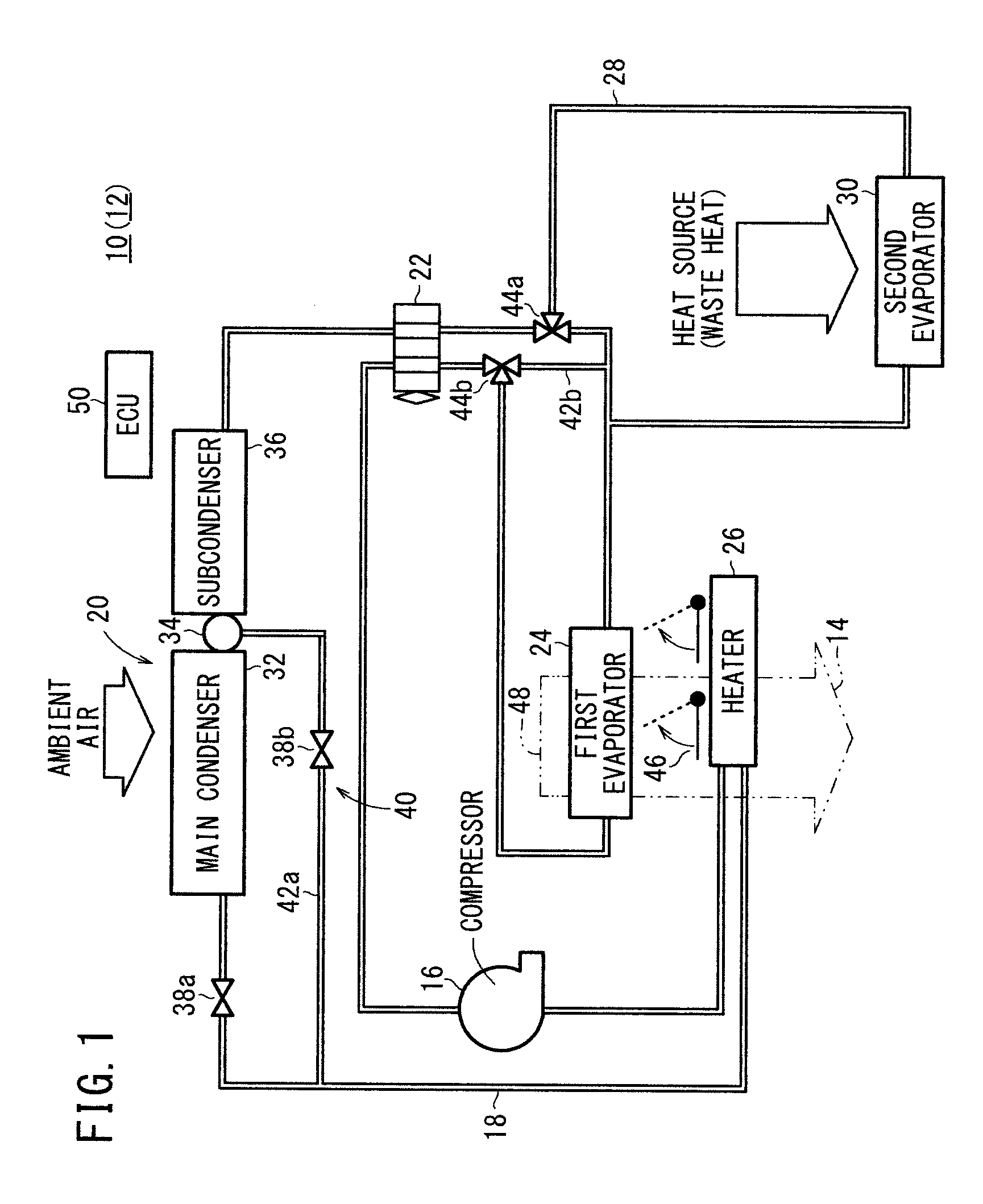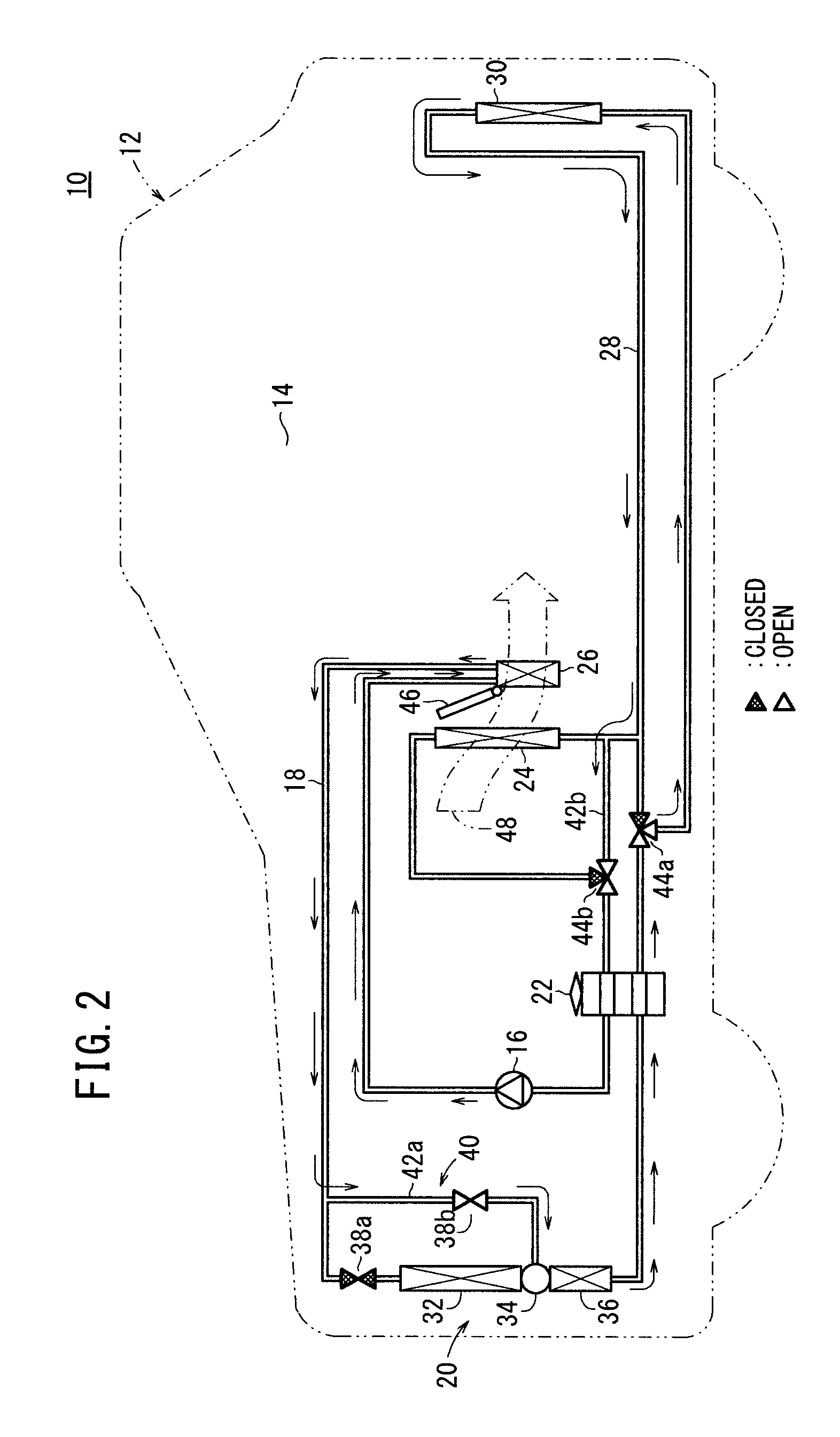Air conditioning system for vehicle
- Summary
- Abstract
- Description
- Claims
- Application Information
AI Technical Summary
Benefits of technology
Problems solved by technology
Method used
Image
Examples
first embodiment
[0032]As shown in FIGS. 1 and 2, a vehicular air conditioning system 10 according to the present invention is incorporated in an automobile (vehicle) 12 for air-conditioning a passenger cabin (vehicle compartment) 14 of the automobile 12.
[0033]The air conditioning system 10 has a heat pump circulation path 18 for circulating a refrigerant via a compressor 16. The heat pump circulation path 18 includes therein a condenser unit (condenser) 20 for performing heat exchange between the refrigerant and ambient air, an expansion valve 22 for depressurizing the refrigerant delivered from the condenser unit 20, a first evaporator (evaporator) for performing heat exchange between the refrigerant that has passed through the expansion valve 22 and air-conditioning air, and a heater 26 for performing heat exchange between the refrigerant delivered from the compressor 16 and the air-conditioning air that has passed through the first evaporator 24.
[0034]The heat pump circulation path 18 branches i...
second embodiment
[0063] as shown in a cycle diagram illustrated in FIG. 7, since the flow rate control valve 64 is used as a pressure loss device, the subcooling region in the heating mode can be increased. Therefore, when the ambient temperature is very low, the flow rate control valve 64 can be actuated to increase the enthalpy difference at the heater 26.
[0064]In addition, with such an increased amount of subcooling, the respective inlet temperatures of the gas-liquid separation refrigerant storage unit 34 and the subcondenser 36, which serves as a supercooling heat exchanger, can be lowered to a temperature equivalent to that of the very low ambient temperature. Therefore, heat radiation from ambient air in the supercooling heat exchanger can be held to a minimum.
[0065]Furthermore, since the amount of subcooling is increased, the capacity of the heater 26 can be increased to a higher temperature and / or higher pressure (from pressure a to pressure al). The heating performance of the heater 26 can...
third embodiment
[0066]FIG. 8 is a schematic block diagram of a vehicular air conditioning system 70 according to the present invention.
[0067]The air conditioning system 70 includes a bypass means 72, which is connected to the heat pump circulation path 18, for connecting the heater 26 to the gas-liquid separation refrigerant storage unit 34 in bypassing relation to the main condenser 32 in the heating mode. The bypass means 72 includes the first bypass path 42a and a capillary 74, which is connected to the first bypass path 42a and serves as a pressure loss device for causing the refrigerant to undergo a pressure loss. The solenoid-operated valve 38b is connected upstream of the capillary 74.
[0068]According to the third embodiment, since the capillary 74 is used as a pressure loss device, the same advantages as those of the second embodiment are achieved. For example, the subcooling region in the heating mode can be increased.
PUM
 Login to View More
Login to View More Abstract
Description
Claims
Application Information
 Login to View More
Login to View More - R&D
- Intellectual Property
- Life Sciences
- Materials
- Tech Scout
- Unparalleled Data Quality
- Higher Quality Content
- 60% Fewer Hallucinations
Browse by: Latest US Patents, China's latest patents, Technical Efficacy Thesaurus, Application Domain, Technology Topic, Popular Technical Reports.
© 2025 PatSnap. All rights reserved.Legal|Privacy policy|Modern Slavery Act Transparency Statement|Sitemap|About US| Contact US: help@patsnap.com



